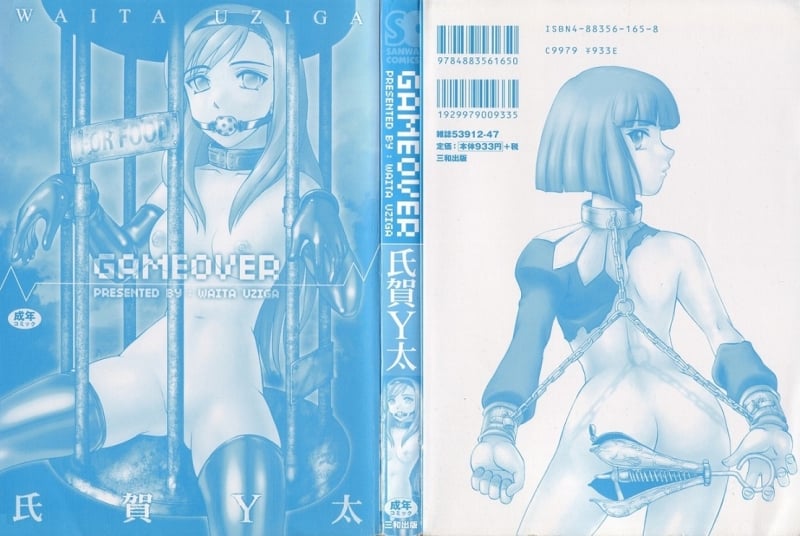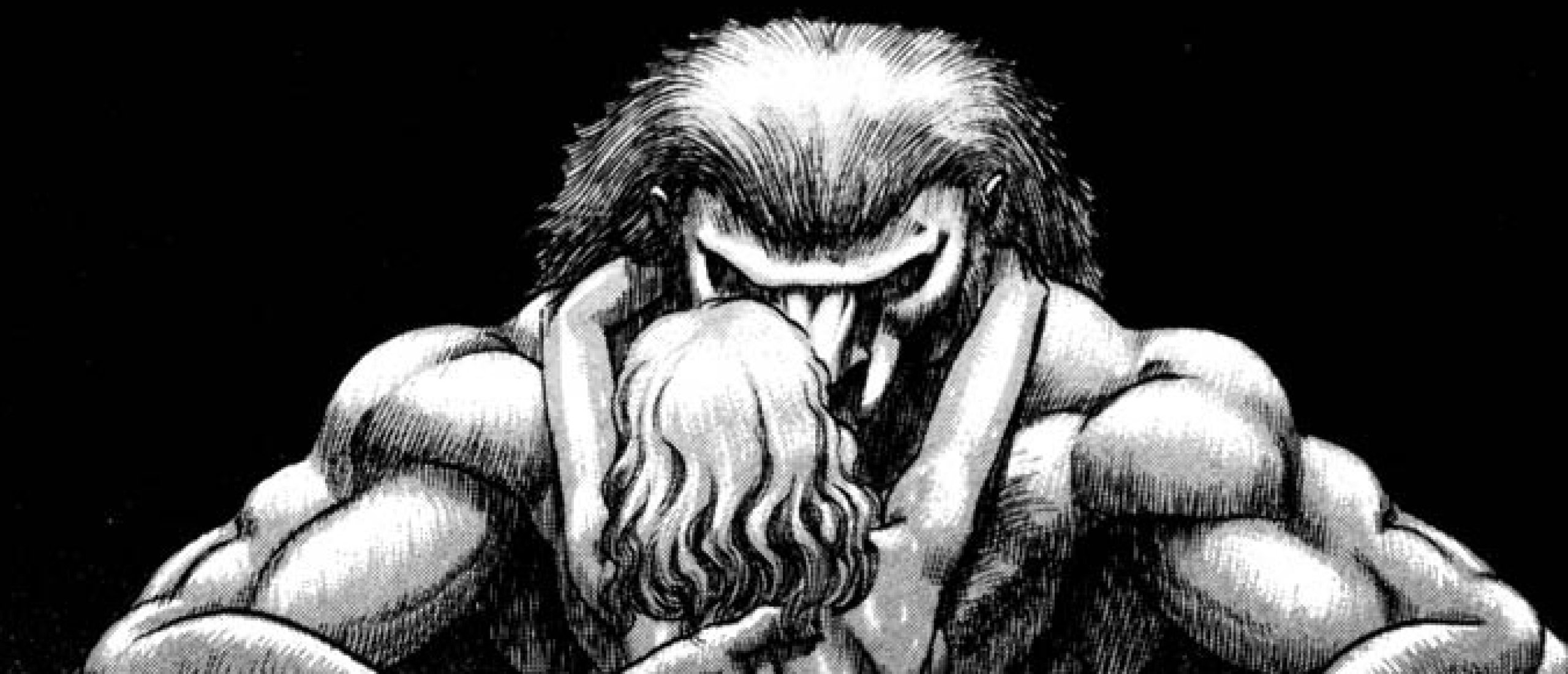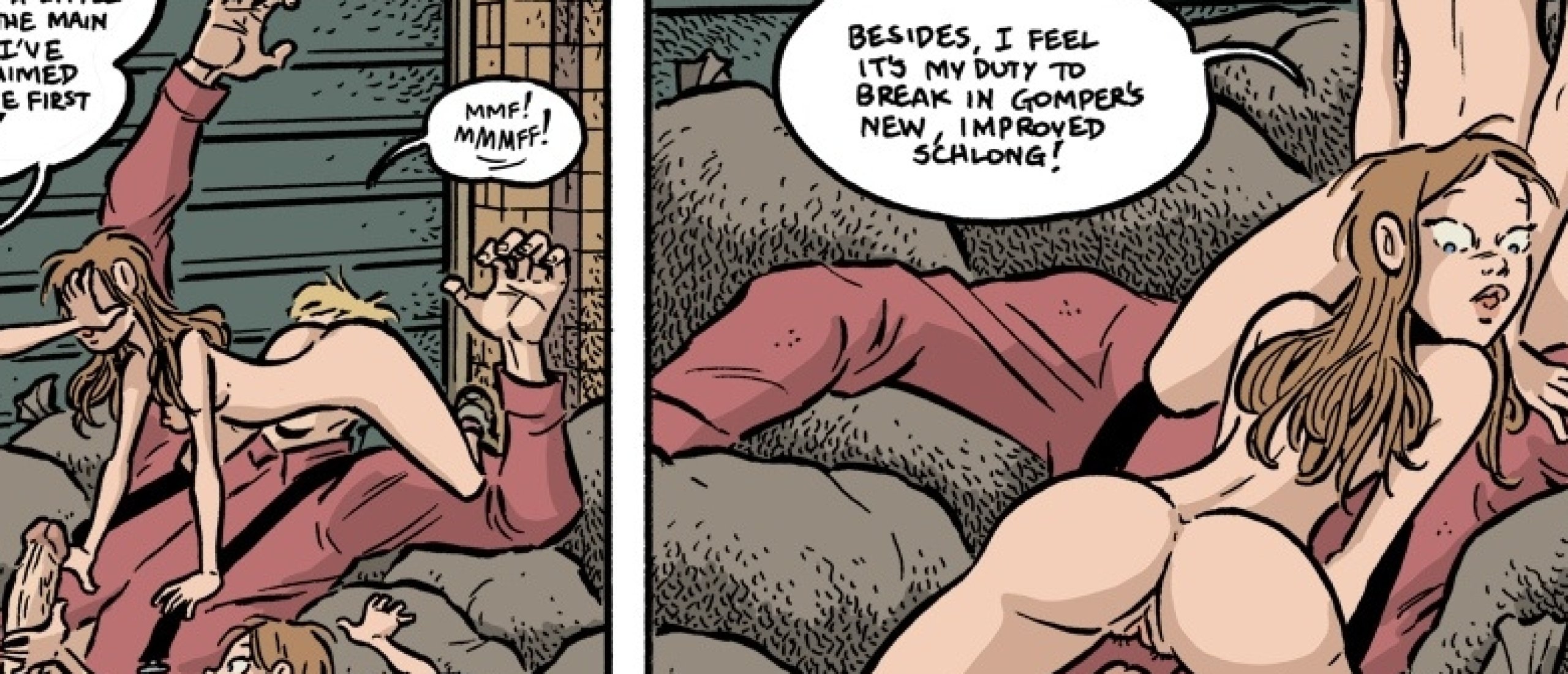
Imagine that you cannot die, and that every attempt to do so results in nothing, since you have the ability to regenerate your body. To make matters worse, in this scenario, there are people who enjoy causing you all types of violence. This is the approach that mangaka Waita Uziga takes when he creates situations in which his character Mai-chan is forced to participate in sexual acts that almost always result in her death, usually caused by dismemberment, mutilation, and incineration. Thus, instead of acting like a Highlander who engages in fights with other immortals to see who is the most powerful, Mai-Chan is represented as a kind of living doll whose objective, in addition to her maid's duties, is to submit to the whim and sadism of the clients in the mansion where she works.

Fig.1. Game Over (2003)

Fig.2. Game Over (2003)

Fig.3. Game Over (2003)
Game Over
Mai-chan's first 'adventures' were published by Waita Uziga in ten chapters in the manga 'Game over' in 2003. In 2004, the author published 'Mai-chan's Daily Life' (まいちゃんの日常), composed of eleven chapters and one omake (extra chapter). Waita Uziga, whose name in Japanese, "Uzi ga waita", can be read as "the maggots have gushed forth", is not only known for “Mai-chan” but also for manga series whose stories almost always involve violence, sex, and dark humor, basic elements of ero guro nansensu.

Fig.4. Game Over (2003)

Fig.5. Game Over (2003)

Fig.6. Game Over (2003)
True Modern Stories of the Bizarre
Published in the anthology 'True Modern Stories of the Bizarre' (真・現代猟奇伝 - Makoto Gendai Ryouki Tem), 'High School Girl in Concrete' (真・現代猟奇伝 - Shin Gendai Ryoukiden), inspired by the murder of Junko Furuta, is one of Waita Uziga's most controversial narratives. Junko Furuta (古田順子, Furuta Junko) (January 18, 1971 – January 4, 1989) was a Japanese high school student who was kidnapped, raped, tortured, and murdered by four male teenagers: Hiroshi Miyano, Jō Ogura, Shinji Minato, and Yasushi Watanabe.

Fig.7. Game Over (2003)

Fig.8. Game Over (2003)
Tortured and Raped
Over a period of 40 days, the four teenagers tortured and raped Junko Furuta until she died. The murder was discovered by the police, and the criminals received sentences ranging from 7 to 20 years. To this day, the crime is considered one of the worst cases of juvenile delinquency in post-war Japan. In ‘High School Girl in Concrete’, Waita Uziga seeks to show the absurdity of the atrocity committed by criminals and that there is a limit between the imaginary and reality, as the manga editors proposed at the beginning of the work:
The message of this work is doesn't mix the imaginary world with the real one. There are differences between imagining something, and doing it in reality that is what we want to show. To do this we asked Mr. Waita Uziga to draw this work based on a crime that really happened. This work is not meant to justify the crime and the criminal. Whenever, we find out the details of such a crime we are frightened by the criminal's unbelievable selfishness and become angry. As you read this work we want you to learn the bare facts and feel anger at this atrocious crime.

Fig.9. Mai-chan's Daily Life (2004)

Fig.10. Mai-chan's Daily Life (2004)

Fig.11. Mai-chan's Daily Life (2004)

Fig.12. Mai-chan's Daily Life (2004)
Transgressing All Norms
In a way, the words that the editors use to justify the creation of the manga 'High School Girl in Concrete' can also be applied to all of Waita Uziga's work. The difference between the imaginary and reality, in the manga featuring the character Mai-chan, is often emphasized by the fictional aspects of this work, such as her consecutive deaths and resurrections. Another way of perceiving Mai-chan's fictional character is the possibility of reading the manga as a set of transgressions that have no other purpose than to create other transgressions in an end process, as if the previous transgressions had never happened. Mai-chan's own immortality can be seen as the possibility of transgressing all norms and acceptable behaviors from which the idea of good derives.

Fig.13. True Modern Stories of the Bizarre (2004)

Fig.14. True Modern Stories of the Bizarre (2004)

Fig.15. True Modern Stories of the Bizarre (2004)
In the extended Premium version of the article, which is more than twice as long (in both text and images), among other things, more on the choice of characters in Waita's manga, an extensive comparison with the TV series Westworld, the criticism of his work, cannibalism, how the artist's uses the grotesque, the 2014-movie Mai-Chan's Daily Life including rare pics, and much more ...!!
Click HERE for an article on Junji Ito's controversial manga Tomie










